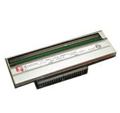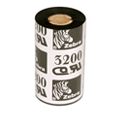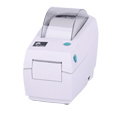Buyer's Guide for Barcode Printers
Please Note: Some of the products linked in this buyer guide might be out of date. We are working to update this documentation. Please reach out to our sales team if you have any questions.
Learn Barcode Printer Basics From The Pros
 How do Barcode Printers Work?
How do Barcode Printers Work?
When connected to a computer via network or local interface cable, barcode printers print data formatted specifically for labeling. The data is then interpreted through the barcode printer's device driver and subsequently printed. Barcode printers have the ability to print barcodes on labels, tags, and tickets.
What Kind of Barcode Printer Should I Buy?
There are many important factors to consider when choosing a barcode printer that will best fit your printing needs. These factors include software requirements and device drivers, cable interfaces, label cutting, environment restrictions and additional functionality. In addition to the previous factors, the type of barcode printer, thermal transfer, direct thermal, or a combination of both, or inkjet, should be a factor in the final decision.
Thermal Technologies
Thermal Transfer vs. Direct Thermal: Questions to Consider
- Will my labels or tags be exposed to direct sunlight or heat?
- Do I need to print high density, crisp, durable barcodes?
- Do I need to print in colors other than black?
- Do I need barcodes to have long life span, i.e. over one year?
If you answered yes to these questions, please read the section below on thermal transfer printing methods. If you answered no, see the section on direct thermal printing methods.
Thermal Transfer
Thermal transfer barcode printing produces high quality crisp barcodes with a long shelf life of over a year. Thermal transfer printers work by using heat to transfer carbon ribbon to the printing media. This means that the printing media does not need to be heat sensitive (in contrast to direct thermal media), and can withstand exposure to direct sunlight and heat. It also means that ribbons and print heads need to be replaced along with the correct media for the ribbon. While there are more supplies involved with thermal transfer printing, the labels and tags that are printed will be able to endure adverse conditions.
Direct Thermal
Direct thermal barcode printers work well for labeling in temperature controlled areas for under a year. Direct thermal material is much more sensitive to its environment than thermal transfer material. Due to the nature of the materials used in direct thermal printing, the labels will darken if exposed to direct sunlight or heat. The media used is a heat sensitive thermal paper which darkens with exposure to heat. During printing, the print head is in direct contact with the barcode printer paper, thereby using heat and pressure to mark the labels. The print heads used in direct thermal barcode printers have longer durability, plus the overall cost of operation is lessened due to a lack of ribbon cost. The downfall to these printers, in addition to potential darkening, is that the color is limited to black, and the barcodes are not as crisp as barcodes from thermal transfer barcode printers.
| Printer Supplies Print Heads, Ink, Ribbons and Media The type of printer you are using will dictate what supplies you will need when it comes to purchasing replacement print heads, printer ribbons, ink and media type. For direct thermal barcode label printers, print heads need to be replaced periodically and labels and tags must be specifically purchased for direct thermal printing. For thermal transfer printing, all three components are needed. It is important to make sure that ribbon, media, and printer are all compatible. For inkjet printing, labels and ink are needed. |
|
 |
Print heads are used for both types of thermal printing, but be sure to reorder the correct print heads for your printer model. |
 |
Media types, including labels, tags, and tickets, are purchased depending on type of printer: inkjet, thermal transfer or direct thermal. Direct thermal printing will not be successful if plain labels are loaded into the printer; heat sensitive paper is necessary. |
 |
Ribbon is only needed in thermal transfer printing, and it must be compatible with the model of the printer being used. For inkjet printers, as with regular desktop inkjet printers, the compatibility between the ink cartridges and the model of printer is very important. |
Software Requirements and Device Drivers
Some software applications only work with specific barcode printer drivers, so it is advisable to check with the software manufacturer to determine the compatibility of a specific barcode printer with your software.
Accessories and Options
Most barcode printers are available with options for either a manual tear bar, auto cutter, or auto peel for delivering the label, tag, or ticket. This is purely a preference depending on usage and needs.
Another option is gap sensing vs. black mark sensing within the printer. Gap sensing, which requires labels without color variation, involves a beam reflecting off the label. When there is a gap in the label the beam does not reflect, and the printer knows it is a new label. Black mark is essentially the opposite and requires labels with black stripes. The beam of light is shot from inside the printer and when it hits, the black is absorbed instead of reflected, letting the printer know it has reached a new label.
Label rewinders are an accessory to consider when purchasing your barcode printer. This machine gives you the option of loading your labels onto a new core to be used on another machine. It allows for controlled, passive rewinding to ensure the printed labels are not damaged between steps and can easily be loaded onto another machine if needed.
Environment and Functionality
When considering a barcode printer, there are a number of factors concerning environment and functionality. Questions to consider include:
- What will I be printing? Tickets? Tags? Labels? All of the above?
- What volume of printing will the printer be used for? Light? Medium? Heavy?
- What type of printer suits my environment? Thermal transfer? Direct thermal? or both?
- Is it important to have storage space in the printer for fonts, graphics, and formats?
- Are printer dimensions a factor? What about barcode width?
- Is speed a factor?
- Do I need a real time clock option?
Barcode Printer Types:
 Zebra 2824 |
Desktop Barcode Printers Desktop barcode printers are small user friendly barcode printers that are ideal for printing a low to medium volume of labels. Major factors when considering desktop printers are type of printer; Thermal Transfer, Direct Thermal (or both), size of labels, and speed of printing. These printers work well in shipping and receiving, retail, and healthcare environments. Models to try: Zebra 2824 or Cognitive Advantage DLX |
 Zebra S4M |
Industrial Barcode Printers Desktop barcode printers are small user friendly barcode printers that are ideal for printing a low to medium volume of labels. Major factors when considering desktop printers are type of printer; thermal transfer, direct thermal (or both), size of labels, and speed of printing. These printers work well in shipping and receiving, retail, and healthcare environments. Models to try: Cognitive Ci & Cxi Series or Zebra ZT200 |
 Primera LX810 |
Ink Jet Barcode Printers Inkjet barcode printers are ideal for low volume and high resolution label printing. These printers create an environment for color label printing that can be done in-house instead of sending out to a professional print shop. Models to try: Primera LX810 Color or Primera LX400 |
Back to Top
For a downloadable version of this review click here